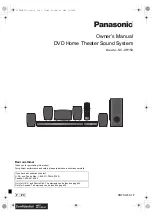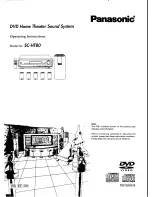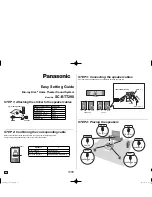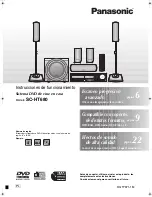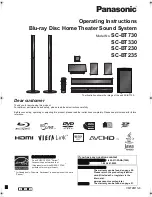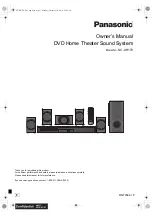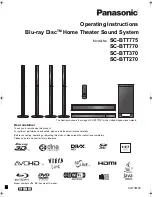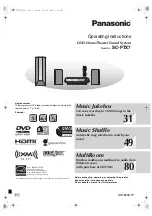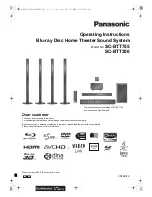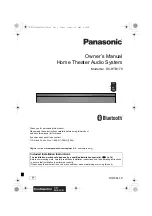
- 11 -
9
1
2
3
4
5
6
7
8
10
11
12
13
9.Cone
1.Outer yoke
2.Plate
3.Magnet
4.Magnet
5.Yoke
6.Frame
7.Voice coil
8.Cone attachment adapter
10.Damper
11.Pole cover
12.Terminals
13.Damper ring
The suspension function of dampers is to always
keep a voice coil centered. NF-1, the target for
which is perfection of every function of it, employs
a double-damper which is advantageous in view of
structure but very time consuming to produce, and
is seen mostly in expensive speaker systems. For
this particular application, considering the fact that
amplitude characteristic greatly impacts sound
quality, we developed an advanced form which can
provide longer stokes than usual, so that a vertically
symmetrical push-pull structure can be constituted
for assurance of superior hysteresis characteristic,
in order not to adversely affect amplitude response
characteristic which greatly influences sound
quality. (Reference the assembly drawing)
A high
degree of
resistance to
heat, as well
as durability
to vibration,
is attained
by the use of
a meta-based
aramid fiber
cloth.
4) Double-damper of a push-pull structure
5) Magnetic circuit
The magnetic circuit is designed to be sufficiently
powerful to be able to reproduce the deepest bass
sound for such rather small diameter speakers.
Magnets used are a large 110 mm outside diameter
strontium ferrite magnet and a 90 mm outside
diameter repulsion magnet, which form a repulsing
magnetic circuit.
The magnetic circuit created by an 8 mm thick top
plate, or 2 times that of previous equivalents, and a
long voice coil of a winding length extending to 11
mm and of a 35 mm diameter, can produce a
powerful 10.5 force factor with a 1.1T flux density.
As a result, successful reproduction of fullest bass
sound has been realized from a small speaker
system of only an 11 liter volume.
An 18 mm diameter ventilation hole is provided on
the center pole for improvement to bass sound and
heat dissipation performance.
The use of an outer yoke can keep display CRTs
completely free from an influence of magnetic
leakage.
6) Voice coil
A coil measuring 35 mm in diameter and wound of
a 0.19 diameter wire is very large for 16 cm
speakers. We believe that the use of hard duralumin
for coil bobbin material must not allow to
deteriorate the sense of fast reaction in the
reproduced sound. Better heat-resistance
characteristic and superb sound transiency are also
attained by the use of such material.
7) Die-cast aluminum frame
For speakers made of a large magnetic circuit that
can create very powerful driving force to be
firmly secured to the front baffle, conventionally
used metal or plastic frames are far from the
optional. To deal with this problem, we decided
to use die-cast aluminum frames.
Additionally, die-cast aluminum frames provide
some other key advantages such as smaller
magnetic leakage and better heat dissipation
characteristics.
FEATURES OF THE TWEETER UNIT
FEATURES OF THE TWEETER UNIT
The following 3 points are considered to be most
important to the high frequencies reproduction of
the next generation of monitor speakers:
Moreover, the most acceptable tweeters are those in
which input power-dependent changes in tone
quality occur to only a minimal extent. To embody
this requirement, NF-1 comprises a tweeter
employing a 20 mm diameter soft dome made of
newly developed UFLC materials and a die-cast
aluminum frame.
The feature of soft dome diaphragms is that it is
possible to use materials, the Young's modulus of
which is not excessively high while the internal loss
of which is large. This enables a good balance in
dispersed resonances occurring in the vibration
mode. Materials having a high Young's modulus,
such as aluminum and titanium, allows sound to
follow input signals very fast. However, even small
internal losses cause high peaks to develop at high
end frequencies, resulting in deterioration of
High end to extend beyond 30kHz
Deterioration of directivity to be no
greater than 6 dB at 20 kHz and 30
0
off
axis
Frequency response to be free of peaks
and dips, sound quality not to be
characterized by inherent factors and
distortion to be at the lowest possible level
a.
b.
c.
Summary of Contents for NF-1
Page 1: ...Technical White Paper NEAR FIELD STUDIO MONITOR ...
Page 2: ... 2 ...

















